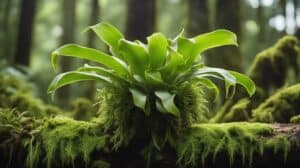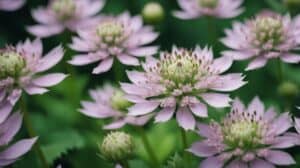Kangaroo Paws, scientifically known as Anigozanthos, are native to Australia and are a popular choice for gardeners and florists alike.
The unique shape and vibrant colors of the flowers make them a standout addition to any floral arrangement or garden.
In this article, we will explore some interesting facts about Kangaroo Paws and their unique floral display.
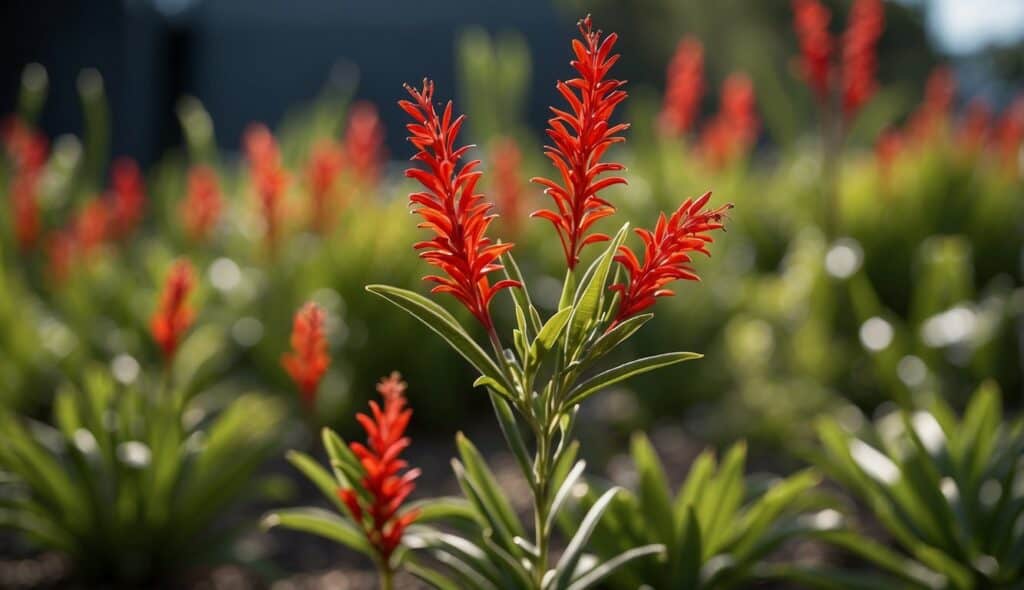
One of the most notable features of Kangaroo Paws is their unusual shape.
The flowers have long, tubular petals that resemble the paw of a kangaroo, hence the name.
The petals are covered in fine hairs which give them a velvety texture.
The flowers come in a range of colors, including red, yellow, orange, pink, and green, and can be solid or bi-colored.
Aside from their striking appearance, Kangaroo Paws are also known for their hardiness and ability to thrive in a range of conditions.
They are drought-tolerant and can survive in both sandy and clay soils.
They also attract birds and other wildlife to the garden, making them a popular choice for nature lovers.
In the following sections, we will delve deeper into the fascinating world of Kangaroo Paws and their unique floral display.
Understanding Anigozanthos
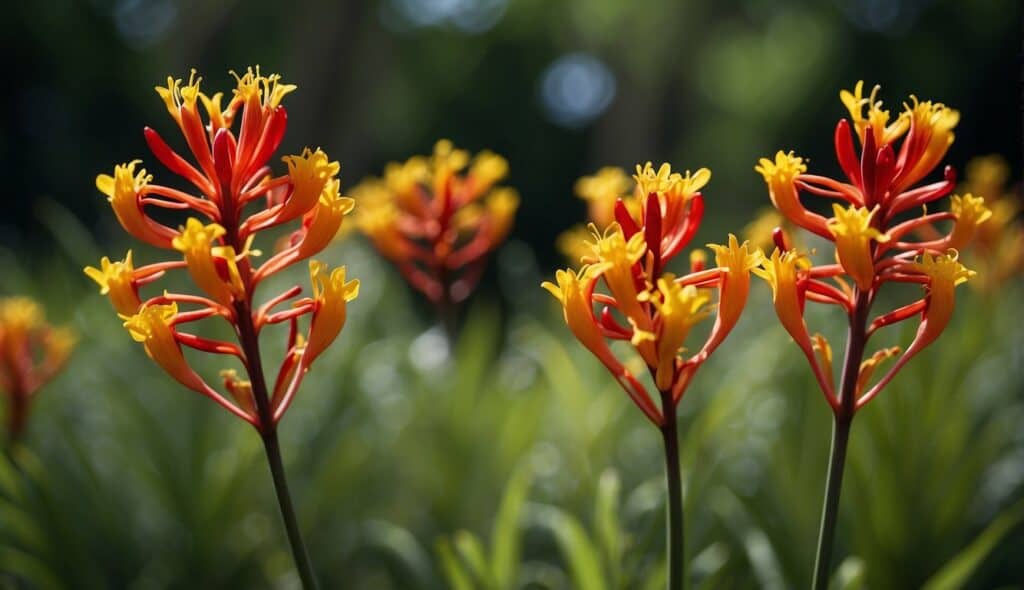
Taxonomy and Classification
Anigozanthos is a genus of plants in the family Haemodoraceae, which is native to the south-west of Western Australia.
It includes around 11 species of evergreen perennials, which are commonly known as kangaroo paws due to their unique flower shape.
The genus was first described by French botanist Jacques Labillardière in 1805, and the name Anigozanthos is derived from the Greek words “anises” meaning unequal, and “anthos” meaning flower.
This refers to the unusual shape of the flowers, which resemble the paw of a kangaroo.
The Name ‘Kangaroo Paw’
The name ‘kangaroo paw’ is a common name for the Anigozanthos plant and is derived from the unique shape of its flower.
The flower is tubular in shape with six claw-like structures that resemble a kangaroo’s paw.
The claw-like structures are covered in velvety hairs, which add to the plant’s unique appearance.
The kangaroo paw plant is also popularly known as the ‘cat’s paw’ plant, due to its resemblance to a cat’s paw.
This name is more commonly used in the United States, where the plant is grown as an ornamental plant.
Overall, Anigozanthos is a unique and fascinating genus of plants that is known for its distinctive flower shape and vibrant colors.
With its interesting taxonomy and common name, the kangaroo paw is a popular choice for gardeners and plant enthusiasts alike.
Morphology of Kangaroo Paw
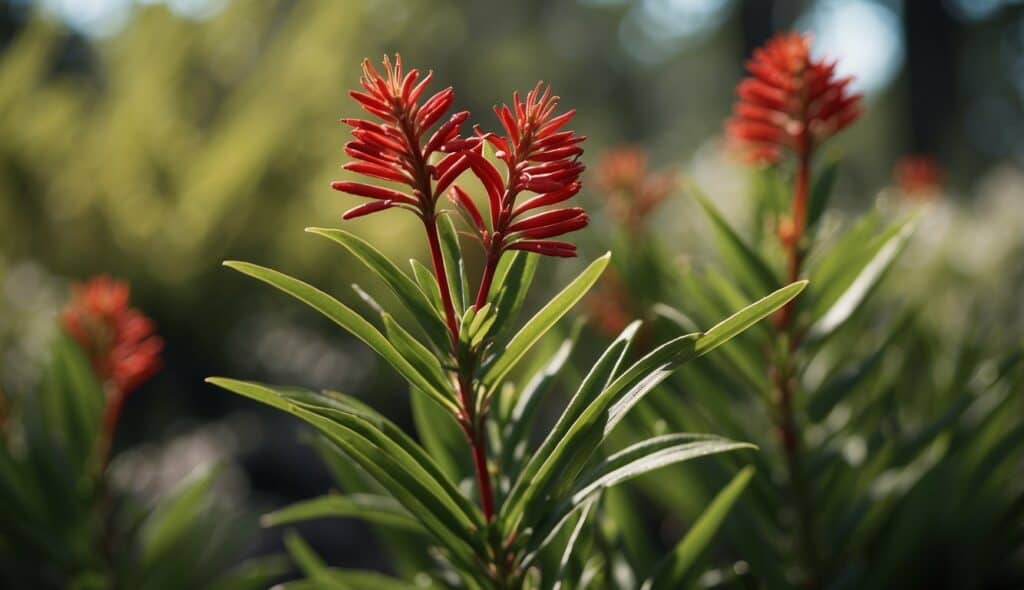
Flower Structure
Kangaroo Paw (Anigozanthos) is a unique plant with an interesting floral display.
The flowers are arranged in a long, slender stem that resembles a kangaroo’s paw, hence the name.
The flowers are tubular in shape and come in a variety of colors, including red, yellow, orange, pink, and green.
The flowers are also covered in fine hairs, giving them a velvety texture.
Each flower has six petals that are fused together to form a tube. The petals are arranged in two rows, with three petals in each row.
The upper three petals are smaller and form a hood-like structure that covers the stamens and pistil.
The lower three petals are larger and more open, providing a landing platform for pollinators.
Foliage Characteristics
In addition to its unique flower structure, Kangaroo Paw also has distinctive foliage. The leaves are long and narrow, with a pointed tip.
They grow in a clumping habit, forming a rosette at the base of the plant. The leaves are also covered in fine hairs, giving them a fuzzy texture.
The leaves are arranged in a spiral pattern around the stem, with each leaf emerging at a slightly different angle.
This arrangement allows the plant to capture sunlight from different angles and maximize photosynthesis.
Overall, the morphology of Kangaroo Paw is well-adapted to its environment.
Its unique flower structure and foliage characteristics make it an interesting addition to any garden or landscape.
Habitat and Distribution

Kangaroo Paws are native to Australia, where they are found in a variety of habitats, including heathlands, woodlands, and forests.
They are most commonly found in Western Australia, where they are the floral emblem of the region.
However, they can also be found in other parts of Australia, including Victoria, New South Wales, and Queensland.
Kangaroo Paws prefer well-drained soils and are often found growing in sandy or gravelly soils.
They are also adapted to fire-prone environments and can regenerate quickly after a fire.
There are 11 species of Kangaroo Paws, each with its own unique distribution range.
For example, Anigozanthos manglesii, also known as the Red-and-Green Kangaroo Paw, is found only in a small area in Western Australia.
On the other hand, Anigozanthos flavidus, or the Tall Kangaroo Paw, has a wider distribution range and can be found in several states in Australia.
Overall, Kangaroo Paws are an important part of Australia’s flora and are prized for their unique floral display.
They are also popular in gardens and as cut flowers, and efforts are being made to conserve and protect their natural habitats.
Cultivation and Care
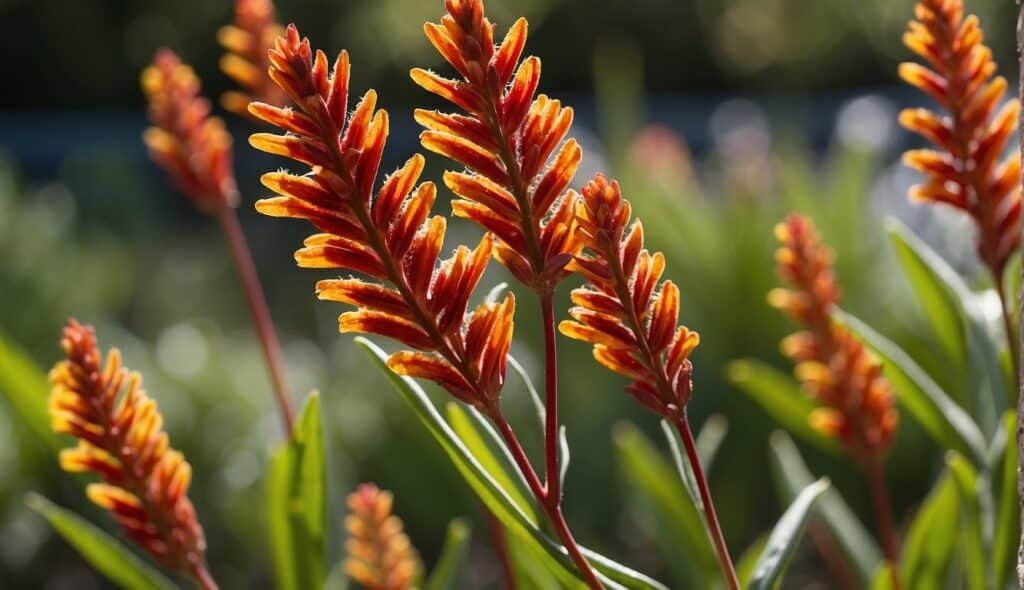
Growing Conditions
Kangaroo Paw plants thrive in warm, sunny conditions with well-draining soil. They are native to Australia, where they grow in sandy or loamy soils.
In other regions, they can be grown in containers or raised beds filled with a well-draining potting mix.
Kangaroo Paw plants require regular watering during the growing season, but they are sensitive to overwatering.
The soil should be kept moist but not waterlogged. During the winter months, watering should be reduced to prevent root rot.
These plants are also sensitive to frost and should be protected during cold weather. They can be grown in USDA hardiness zones 9-11.
Propagation Methods
Kangaroo Paw plants can be propagated by division or by seed. Division is the easiest method and should be done in the spring when new growth appears.
The plant should be carefully dug up and divided into smaller sections, each with its own root system.
Seeds can be sown in the spring or fall. The seeds should be lightly covered with soil and kept moist until they germinate.
It can take several weeks for the seeds to sprout.
Once the plants have been propagated, they should be planted in a well-draining soil mixture and kept moist until they become established.
Fertilizer can be added to the soil to encourage growth, but it should be used sparingly to avoid burning the plant’s roots.
Overall, Kangaroo Paw plants are relatively easy to care for and can provide a unique and colorful addition to any garden or landscape.
Frequently Asked Questions
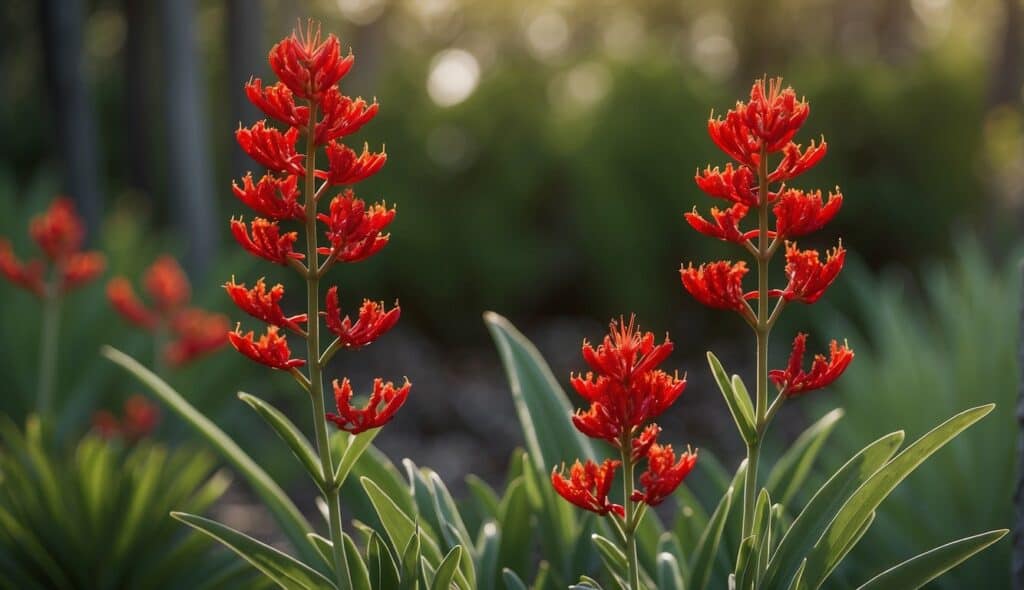
What color varieties do Kangaroo Paw flowers come in?
Kangaroo Paw flowers come in a wide range of colors, including red, pink, orange, yellow, green, and brown. Some varieties even have bi-colored blooms.
The flowers get their name from their unique shape, which resembles a kangaroo’s paw.
During which seasons are Kangaroo Paw flowers typically available?
Kangaroo Paw flowers are typically available year-round, but peak production occurs during the spring and summer months.
They are native to Australia, where they bloom in the wild from August to November.
How are Kangaroo Paw flowers used in design and decor?
Kangaroo Paw flowers are popular in floral arrangements and are often used as a focal point due to their unique shape and bright colors.
They can also be used in landscaping and are a popular choice for xeriscaping and water-wise gardens.
What is the expected vase life of Anigozanthos flavidus cut flowers?
The vase life of Kangaroo Paw flowers varies depending on the variety and growing conditions.
Generally, they last around 7-10 days in a vase with proper care.
To extend their vase life, it is recommended to change the water every other day and trim the stems at an angle.
What are the common names for the Kangaroo Paw plant?
The Kangaroo Paw plant is also known as Anigozanthos, which is derived from the Greek words “anisos” meaning unequal and “anthos” meaning flower.
It is also commonly referred to as the “Kangaroo Foot” plant.
What spiritual meanings or symbolism are associated with Kangaroo Paw flowers?
In Aboriginal culture, the Kangaroo Paw flower is believed to represent the footprints of the ancestral spirits.
It is also said to symbolize good luck and prosperity.
In modern times, the flower is often associated with creativity and individuality due to its unique shape and vibrant colors.












